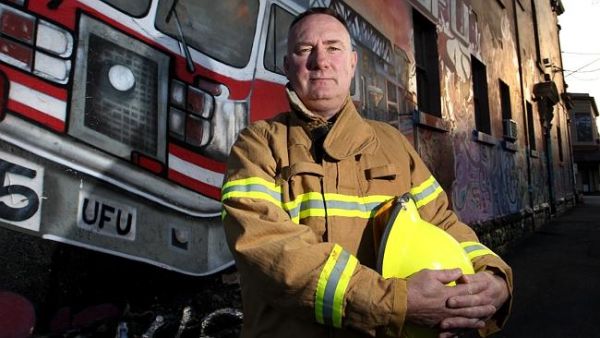Melbourne’s Metropolitan Fire Brigade has opened a new front in the controversy over dangerous building materials that fail to comply with tough laws designed to protect occupants, warning it will modify its firefighting strategy when called to blazes involving substandard products.
The position is outlined in a submission to a Senate inquiry established after a series of reports in The Australian revealed the extent of non-compliant products being used in the booming apartment industry and the associated fire risk.
The MFB warning raises serious questions for occupants in buildings found to contain unsafe materials. It says it will modify its response to be “less aggressive” to protect the lives of fire crews if attending a blaze where the compliance of building products cannot be assured.
The submission says the use of unsafe products, such as flammable Chinese aluminium cladding, has changed the nature and predictability of fires.
“Ultimately, the MFB makes this submission because of concern about a risk to life because the use of non-compliant building products means that fires may spread faster, cause more damage, be more unpredictable and be less safe for firefighters,” the submissions says.
“In some situations the MFB may need to withdraw firefighters from responding to parts of a building where non-compliant products are in use because of a risk to their life.”
The MFB submission calls for an urgent government-led crackdown on the use of dangerous building products, admitting being taken by surprise by last year’s apartment tower inferno in Melbourne’s high-density Docklands area.
The fire at the Lacrosse tower exposed what one expert called the construction industry’s “dirty little secret”, when it was revealed the complex had been covered in a cheap, imported and highly flammable aluminium cladding which breached Australia’s strict fire, safety and building regulations. Standard operating procedures were ineffective against the blaze, which raced up the external cladding of the Lacrosse tower, jumping 13 floors in less than 11 minutes.
CSIRO testing of the cladding from the building found it to be so flammable that scientists had to abandon combustibility tests after only 93 seconds to avoid damaging their equipment.
“The MFB’s analysis indicates that it is fortuitous that the fire did not cause greater property damage and loss of life,” the submission says. “Fire safety in modern buildings should not be a result of good luck.”
United Firefighters Union national secretary Peter Marshall said firefighters would not be easily withdrawn from fighting fires as their “whole existence is to protect life and property”.
“Firefighters are not reckless in their endeavours and their job is extremely dangerous,” Mr Marshall said. “It would be highly unusual for a firefighter to not perform their role to the best of their ability in any circumstances.”
Almost 600 residents of the Lacrosse tower have been permitted to return to their homes despite the complex still being covered in highly flammable cladding.
Fire experts have repeatedly warned the building is still a potential death trap, despite being declared safe by the MFB and Melbourne City Council. Fire Protection Association chief Scott Williams said nothing had changed at the building. It was still clad in the noncompliant material and residents were taking a “calculated risk”.
Independent senator Nick Xenophon combined with John Madigan and Jacqui Lambie to launch the inquiry into inferior building products, including electrical cabling and windows that fell off ASIO’s headquarters in Canberra.
The MFB submission says standard firefighting measures become counterproductive in a residential fire involving nonconforming building products, exposing significant risk to fire crews and compromising evacuation procedures with an “increased likelihood of injury or death of occupants”. “In situations where the MFB does not know if conforming products have been used, it is also possible that the MFB may need to modify its response to be less aggressive and therefore safer for firefighters because of an apprehension of risk,” the submission warns.
CSIRO and Master Builders Australia submissions backed the MFB concerns over the use of noncompliant products.
“Master Builders is concerned at the potential for catastrophic failures if (nonconforming products) are allowed to enter, or remain unchecked, in the building supply chain,” its submission says.
The CSIRO submission said urgent regulatory action was needed before the use of “low-value building products” resulted in “catastrophic outcomes”. It said all high-risk building products should be independently tested to determine their compliance with building regulations.
A recent meeting of state and territory ministers resolved to investigate a mandatory certification scheme for all life-threatening building products.


